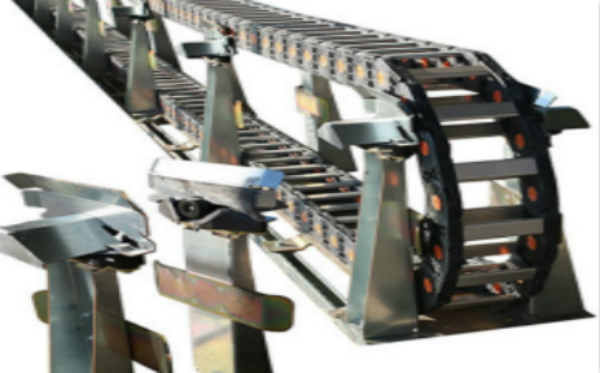What type of cable management should you use in your motion control systems?
Where there is a myriad of cables and wiring, cable management becomes an issue. A simple, low-cost form of cable management uses twist-tie bundlers that groups wires and cables together. However, such bundling can pose weight problems that cause sagging and put undue strain on cables.

Cable carriers can house a large volume of cables and wires while supporting their weight without sagging or putting stress on the cabling. Here, Dynatect’s Gortrac Articulated Roller Support (ARS) long travel system eliminates traditional guide troughs, reducing system weight and costs. It is intended for applications up to 300 ft and eliminates the expense, potential damage, and depot storage area of a traditional trough.
For stationary applications, cable trays safely and cleanly route cables. They are made of an U-shaped open channel into which cables safely lay. They can be open or closed for protection against contaminants. When selecting a cable tray, consider what type of cable is to be routed, including its diameter and weight, the span between supports, the distance of the cable run, and environmental conditions.
Cable carriers for dynamic axes can house many cables and wires and support the weight of them all without stressing the cabling. They can be made of plastic, steel, or a metal alloy in open or closed designs.
Define the length of travel, number of cables or hoses, size and weight of the cables, required speed and acceleration, and environmental factors (such as exposure to dirt, heat, or chemicals) before selection. Also define the carrier’s maximum possible bend radius — measured from the center of its curve loop to the center of the pivot pin on its side link. A larger bend radius means less stress on cable and a longer service life.
Source : Wire & Cable Tips




